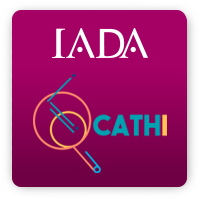BEST PRACTICES OF TOP MANAGEMENT LEADERSHIP AND WORKERS’ PARTICIPATION FOR ERGONOMICS MANAGEMENT IN SUPPLY CHAINS
Evaluating of Ergonomics Management (EM) in the Supply Chain (SC) is a developing process that must be conducted comprehensively and holistically. That is why top management leadership practices and worker participation (TML&WPPs) is a construct that play a crucial role in this process. Such pra...
Guardat en:
| Altres autors: | , , , , |
|---|---|
| Format: | Capítulo de libro |
| Idioma: | spa |
| Publicat: |
Sociedad de Ergonomistas de México, A.C.
2024
|
| Matèries: | |
| Accés en línia: | https://www.semac.org.mx/libros-semac/ |
| Etiquetes: |
Afegir etiqueta
Sense etiquetes, Sigues el primer a etiquetar aquest registre!
|
| Sumari: | Evaluating of Ergonomics Management (EM) in the Supply Chain (SC) is a developing process that must be conducted comprehensively and holistically. That is why top management leadership practices and worker participation (TML&WPPs) is a construct that play a crucial role in this process. Such practices have been recognized in the literature since, through their implementation, significant improvements in efficiency and productivity are obtained, as well as in the prevention and evaluation of ergonomic risks. This research aims to determine the best TML&WPPs for EM. A literature review was created for this purpose. After that, a digital instrument was created with closed-ended, 5-point Likert scale questions (1– 5) regarding the degree of agreement with the TML&WPPs in SC for EM. 1 represents strongly disagree, and 5 represents strongly agree. Finding each item's median and interquartile ranges was the first step in performing a descriptive analysis on a convenience sample of Latin American experts. As a result, an instrument composed of seventeen items measuring four dimensions was designed and applied electronically: 1) leadership and commitment; 2) ergonomics policy; 3) roles, responsibilities, and authorities in the organization; and 4) consultation and participation of workers. The descriptive analysis was performed considering the responses of thirty-four experts. The highest medians with lower interquartile ranges determine a high degree of agreement with the relevance of the practice, identifying that most of these are centered on the actions of top management. Among the best practices are the leadership and commitment of top management to take full responsibility for injury prevention, health impairment, accountability, and the provision of safe and healthy workplaces and activities, in addition to establishing the ergonomics policy and objectives, supporting the formation of the health and safety committee, and ensuring the availability of the necessary resources. Another is related to implementing and maintaining a documented, communicated, and relevant ergonomics policy that includes the commitment to comply with legal requirements and eliminate or reduce ergonomic risks. It also promotes the means and invites workers to report incidents, hazards, risks, and opportunities freely and confidently. Thus, these practices should be promoted, implemented, and evaluated effectively in the SC. Therefore, the instrument designed, and the proposed dimensions can be considered pertinent for the evaluate these practices in the industry. |
|---|
